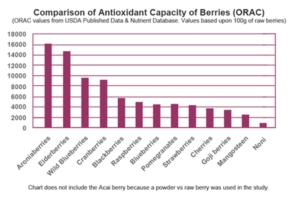Research and products development
Our goal is to provide an innovative solutions to the production issues of our customers and by delivering them niche products, helping them to create brand new final product lines.
We listen to our client’s needs and try to develop our portfolio to keep it in line with the market demand. As a result of the research work we undertake, we now offer super clean dried fruit seeds and unrefined oils pressed from even very small seeds, such as strawberry seeds, raspberry seeds and aronia seeds, as well as super fine natural fibre powders with particles sizes even below 10 microns. This brings extra value in comparison to the coarse fibre powders existing on the market.
Research papers on the ingredients of GreenField
Our research and products development are supported by Polish university research units. Our close cooperation with Polish scientists have resulted in several scientific research papers that have been published in prestigious journals. Among these are the following:
- Health benefits of Aronia berries – Prof. Iwona Wawer; Faculty of Pharmacy, The Medical University of Warsaw, Poland
The largest plantations with selected best aronia cultivars situated in Poland (Nero, Galicjanka/Eggert), produce around 25 000 – 50 000 tons of aronia berries each year. The health benefits of aronia result from their content of strong antioxidants (polyphenolic compounds) that increase antioxidant capacity and protect against lipid peroxidation. Antioxidants protect human body cells against the effects of free radicals and help mitigate or even treat many health problems, among others: hypertension and heart disease, cancer, inflammation, arthritis, infections and neurodegeneration (memory impairment).
Aronia offers the highest content of anthocyanins (3-8 g/kg) and total polyphenols (10-20 g/kg) in fruit market. Antioxidant and radical absorptive capacity (ORAC) of foods can neutralize the effects of free radicals, with the highest ever obtained antioxidant capacity of 160 µmol TE/g for aronia.
 Studies have confirmed that anthocyanin-rich dry extracts of aronia berries display health-promoting activity in the treatment of many diseases of free-radical etiology. Moreover, their intake enables significant lowering of systolic and diastolic blood pressure. Aronia juice also reduces total cholesterol level, LDL and triglycerides, increases HDL level and offers significant hypotensive reduction effects. Of note, freeze dried aronia (lyophilized) contains much more anthocyanins and total polyphenols than lyophilized açai fruits.
Studies have confirmed that anthocyanin-rich dry extracts of aronia berries display health-promoting activity in the treatment of many diseases of free-radical etiology. Moreover, their intake enables significant lowering of systolic and diastolic blood pressure. Aronia juice also reduces total cholesterol level, LDL and triglycerides, increases HDL level and offers significant hypotensive reduction effects. Of note, freeze dried aronia (lyophilized) contains much more anthocyanins and total polyphenols than lyophilized açai fruits.
Many tests have shown that anthocyanins from aronia may be beneficial in keeping proper eye vision for people constantly working with computers and for car drivers frequently traveling long distances by night. Aronia consumption is also recommended for diabetes and for sportsmen and people with stressful life styles. Beyoned the aforementioned, aronia fruit could be useful in controlling oxidative stress during pregnancies complicated by diabetes.
For those reasons aronia has become a must-have in people’s everyday diets due to its vast medical and health promoting properties.
- Seed-Roasting Process Affects Oxidative Stability of Cold-Pressed Oils – Poznań University of Life Sciences, Poland
Cold-pressed oils have high levels of polyunsaturated fatty acids (PUFAs), wherein oxidation is the main reaction that decreases oil quality. The bioactive compounds present in oils, such as carotenoids, polyphenols, phytosterols, and tocochromanols, show a strong antioxidant effect that can protect against PUFA’s oxidation.
It is well-known that the main role of antioxidants in oils is to protect unsaturated fatty acids against autoxidation. Roasting the seeds prior to cold-pressing was found to significantly increase the antioxidant properties of the oils, without affecting the fatty acid composition itself. For example, roasting raspberry seeds caused the antioxidant capacity of the resulting oil to increase from 710 to 1068 _mol TE/g. Moreover studies has demonstrated that roasting seeds led to a significant extension of the oxidation stability period for aronia seed oil (229%), raspberry seed oil (42%) and blackcurrant seed oil (35%). Roasting, however, had no significant e ffect on the oxidation induction time of strawberry seed oil.
The majority of materials used in this research, such as dried strawberry seeds, dried raspberry seeds, dried aronia seeds and dried blackcurrant seeds were supplied by GreenField company (Warsaw, Poland). The processing of these berry fruit seeds resulted in creating new oils with interesting nutritional values, such as high levels of polyphenolic compounds.
The oxidative stability of vegetable oils mainly depends on their fatty acid composition, their degree of unsaturation, and the presence of compounds with antioxidant activity. Roasting the seeds increased the levels of chlorophyll and beta-carotene in all the cold-pressed oils. A similar positive effect was observed on the oil’s stability in both the extension of oxidation induction time and the final oxidation time.
The autoxidation of oils is essentially determined by the type and quantity of their PUFA components. The highest linoleic acid content (C18:2 n-6) was found in aronia seed oil (~74%). Other berry oils have a similar linoleic acid content of approximately 50%. Blackcurrant seed oil also contains gamma-linolenic acid (C18:3 n-6), which is not present in the other berry seed oils.
- Study of the sorption properties of selected fibres and fruit pomace – Master’s thesis; Warsaw University of Life Sciences SGGW Warsaw, Poland
Fruit fibre is the structural element of plants. The fibre is composed of elements of plant cell walls, mucilages, resistant starch, polydextrose, oligosaccharides and vegetable gums. The main function of the fibres in the human consumption is to prevent overweight and obesity through lesser food intake by their holding the ability to swell in the stomach, which results in a longer feeling of fullness. Their intake also improves intestinal peristalsis and reduces the risk of colon cancer. Microorganisms that hydrolyse fibre in the large intestine, regulate the work of the intestines, stimulate the immune system and support the production of hormones, biotin and vitamin K.
Dietary fibre is used in the production of fibre preparations that contribute to the improvement of the texture of the finished food products thanks to their water-binding ability. In addition, fibre preparations increase the volume of the product and reduce calorific value by replacing fat. The advantage of their application is the lack of introduction of foreign flavours and smells to the product.
Fruit pomace is a by-product that is produced in fruit processing during the production of juices, pulps and jams. Depending on the variety and processing method, the pomace consists of skins, seeds and pulp remnants. Due to the content of many health-promoting ingredients, in recent years there has been a noticeable increase in interest in the possibility of reusing these by-products. Fruit pomace is a source of dietary fibre, minerals, saccharides, proteins, organic acids, lipids, vitamins, aldehydes and alcohols. It is also rich in aromatics and dyes, including anthocyanins that can give a colour to the final product from yellow to blue. Berry pomace is characterised by having high content of colouring compounds that can be extracted and used for the production of dyes. In addition, they have been used as antioxidants responsible for protection against the harmful effects of free radicals, which in turn helps to treat or prevent heart disease, cataracts and cancer, and to inhibit the aging process. Fruit pomace is also a rich source of biopolymers, proteins and carbohydrates that can be recovered, concentrated and transformed into precursors and then used in the cosmetics, pharmaceutical and food industries. It can also be used for the growth of microorganisms as an alternative carbon source for glucose and sucrose.
Apple peels are characterized by a high content of phenols, which means a greater concentration of these bioactive compounds is found in the pomace than in the whole fruit. Phenolic compounds have strong antimicrobial, anti-inflammatory and antioxidant properties. Isolating these substances allows for the introduction of pomace into cosmetic preparations. Currently, the most popular way of using pomace is as animal feed or as an ingredient in the production of fruit teas, where it enhances the organoleptic qualities. Moreover the ability to absorb free radicals has been observed in the water extract from freeze-dried chokeberry pomace. The pomace can be used in extruded snack foods, which can provide an alternative to the cereal snacks on the market, which are usually characterized by low nutritional value, or in confectionery and baking products. Numerous studies have shown that the extracts obtained from pomace have the effect of extending the shelf life of products, therefore they can also be used in food preservation.

